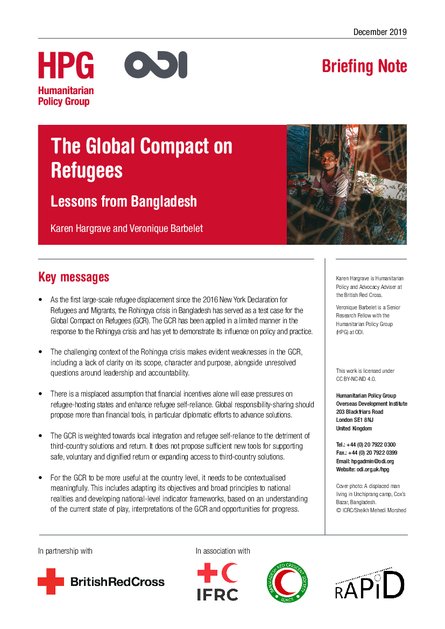
As the first large-scale refugee displacement since the 2016 New York Declaration for Refugees and Migrants, the Rohingya crisis in Bangladesh has served as a test case for the Global Compact on Refugees (GCR). This briefing note, written in partnership with the British Red Cross, outlines the use, applicability and relevance of the GCR in relation to the Rohingya crisis.
Key messages
- The GCR has been applied in a limited manner in the response to the Rohingya crisis and has yet to demonstrate its influence on policy and practice.
- The challenging context of the Rohingya crisis makes evident weaknesses in the GCR, including a lack of clarity on its scope, character and purpose, alongside unresolved questions around leadership and accountability.
- There is a misplaced assumption that financial incentives alone will ease pressures on refugee-hosting states and enhance refugee self-reliance. Global responsibility-sharing should propose more than financial tools, in particular diplomatic efforts to advance solutions.
- The GCR is weighted towards local integration and refugee self-reliance to the detriment of third-country solutions and return. It does not propose sufficient new tools for supporting safe, voluntary and dignified return or expanding access to third-country solutions.
- For the GCR to be more useful at the country level, it needs to be contextualised meaningfully. This includes adapting its objectives and broad principles to national realities and developing national-level indicator frameworks, based on an understanding of the current state of play, interpretations of the GCR and opportunities for progress.
